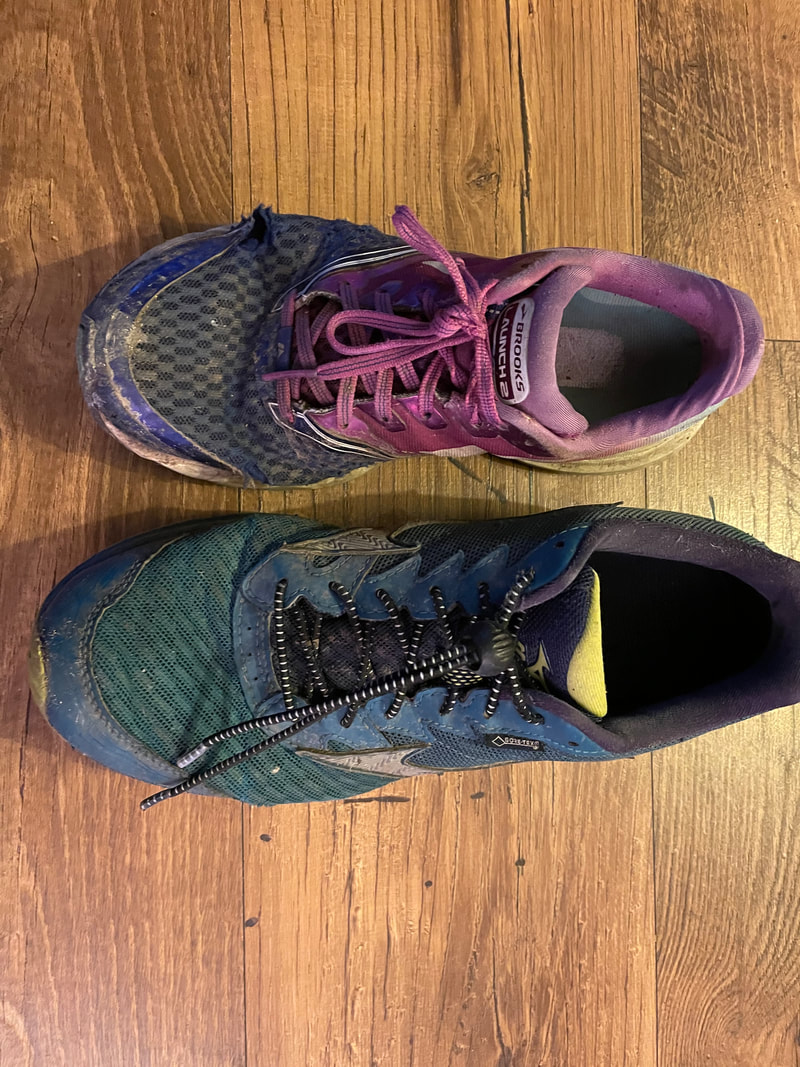Part 3 : Injury Prevention; numero uno in endurance training If you’re not in, you can’t win. One Ironman survey participant put it bluntly with his/her piece of advice, “No. 1 rule, don’t get injured”. This blog is going to try to lay out the top tips to stay off the physio’s patient list! You might have noticed I didn’t use the old cliché to stay off the physio table. That’s because I happen to have a little bug bear around that. When it comes to overuse injuries (stress fracture, shin splints, achilles tendon, calf strain, frontal knee pain, runners knee, IT band, tendinopathies etc.) and you attend your physio, there needs to be an in-depth discussion about your training volume/speed/recovery leading up to the injury. This chat should happen before you throw yourself up on the table. The interview, if carried out properly, will steer the diagnosis hugely. At that point, the table can be used, but only to carry out a series of objective tests in order to confirm or disprove the diagnosis. Then, and only then, should a finger be pressed against the area looking for the “ow” from the patient. This logical work up of questions and tests will allow for a non-biased approach and better patient care. Let’s move on with the blog now that I’ve got that out of the way! I plan to stay regimented and straight to the point with this week’s post using bullet points to keep me right. If you make these part of your endurance training plan, you will have a significantly lower risk of overuse injury.
NB: It is so important to not interpret the zone 2 recommendations as a blanket recommendation that everyone should do. Zone 2 training is not useful for someone who already has impressive metabolic efficiency at low intensity training. They already have high capillary content and mitochondria density, so they are better working in the zones where they are not as efficient. Gas analysis fitness testing finds out where the client is inefficient, their physiological limitations and the intensities where they do not train. The advice is to start training where the client doesn’t usually train. This is called training variability and it is vital to any well-rounded training plan. The Running Shoe This one may cause a stir amongst my readers!! I'm gonna conserve my bullet points and go in all guns blazin' here! There is no scientific evidence to show that changing running shoes after a certain number of kilometres have any bearing on injury risk. We know the manufacturer of the shoe sets out a number of kilometres where they recommend changing the shoe like you would the tyre on a car. There is no research showing this to be the case. There is also no conclusive research showing the need for a stability shoe to help control over-pronation, or likewise the need for a neutral shoe for those who don’t have fallen arches or otherwise known as over-pronation. There is a study however with a large sample size where they followed runners for 1 year. The participants of the study were graded in terms of their foot position from one of supination (high arch) all the way to pronation (flat foot). The results were interesting in that injury rates were lowest in the group where the foot position was between 7-10 degrees pronation. This group had injury rates significantly less than all the other groups. This tells us that a flat foot can be seen as an advantage with respect to running injuries! To second that statement, there are no studies showing a relationship between over-pronation and increased risk of injuries. To stay with the science here, the reason why general wear of the cushion in the shoe after so many kilometres is not a reason to go to the shops or online to buy another pair is because there is no research connecting cushioning properties to injury risk. What may entice you to the shops is when you feel your shoe is no longer as comfortable after however many miles. That’s the right time to change them. Comfort is now the new paradigm in the world of running shoes instead of cushioning and pronation. Comfort is a vague term, it’s difficult to define and to quantify and it’s very subjective, I know. More research is needed, but for now, the comfort filter is backed by science. In summary, is that the research does not support the requirement for neutral shoes, stability shoes or hoka shoes in order to reduce injury risk. In practical terms, you should try on lots of shoes and go with the ones that feel the most comfortable. If they still feel comfortable after 6 years including the 2015 Dublin marathon under their belt, then that’s absolutely fine and will not put me at increased risk of injury! I say this because it’s true. Myself and Aisling ran the 2015 Dublin marathon together, and stayed together for the entire thing. We still run in the same runners! A show and tell video with the famous shoes and a little piece on barefoot runners. Allow adequate recovery. This is a huge topic to cover so I’ll keep it to the following points
Lastly but very importantly, keep tabs on your mood. Psychological symptoms will usually occur before physiological symptoms. If you sense a change, this should alarm you to check your training volume/intensity to see if you can detect any overtraining. This is a good place to point you towards a running performance and injury prevention short video series I made for the Run Killarney event back when the world had not yet met Covid. I don't know why I let my hair grow that much! I didn't have the excuse of level 5 restrictions either. The above Runfit service has progressed from the time when the videos were recorded. I now use Leomo technology to capture running metrics such as cadence, vertical oscillation, foot strike, recoil angular range, leg swing speed and more. The best thing about this technology is that it allows for a gait analysis assessment to take place outdoors. For more information on this service, click here Thanks again to all of you for following the blog series. John Phelan MSc Physio, BSc Nutrition www.thebikefitphysio.com & www.lifefitphysio.ie
2 Comments
Kevin
19/2/2021 18:42:36
Really enjoyed this,great read thanks John!
Reply
Leave a Reply. |
John
|
|
|




 RSS Feed
RSS Feed